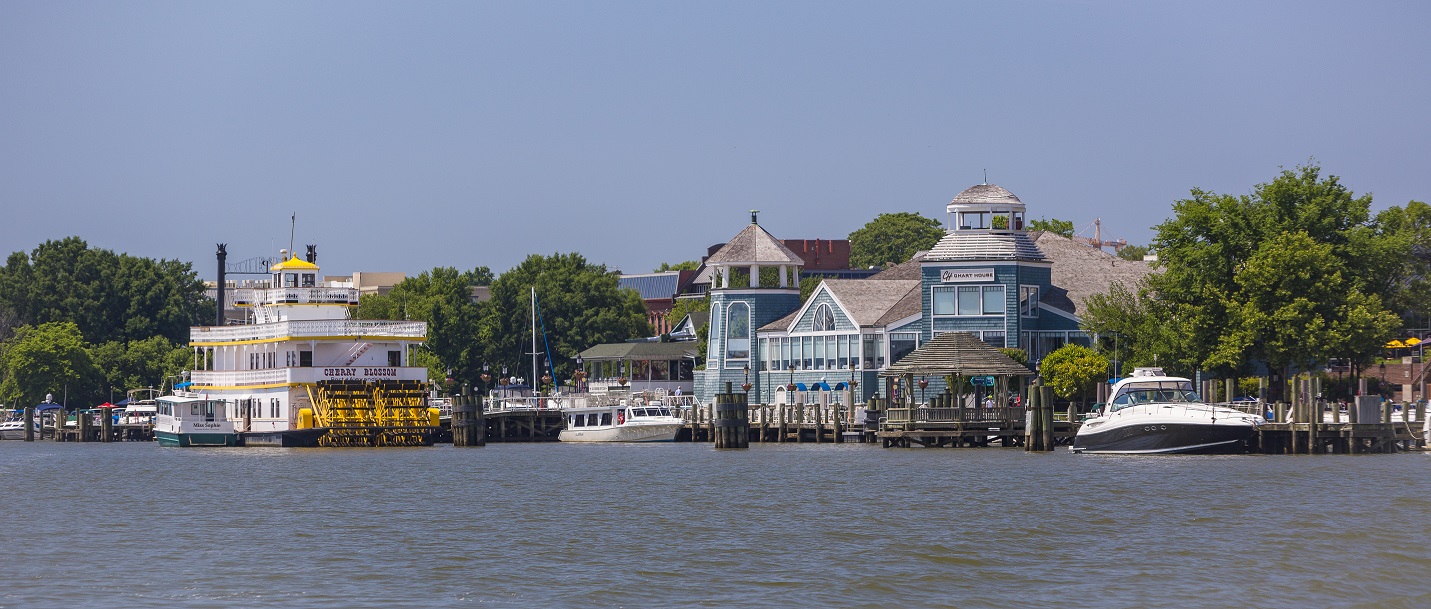Alexandria Waterfront Restored: Potomac Redevelopment Plans Bring New Life to 'Old Town'
By
Frank Dillow

THE POTOMAC RIVER has defined Alexandria since the city’s founding nearly 270 years ago. The broad inlets and marshes along its banks made roads nearly impossible. As a result, the river became the principal highway linking Alexandria to other Potomac waterfront settlements – as well as to ports around the world.
Recent steps to implement Alexandria’s Waterfront Small Area Plan have given city officials an opportunity to make the river as important to its future as it has been to its past.
Few Alexandrians realize the significance of the Potomac River to their city as it flows 390 miles from Fairfax Stone State Park in West Virginia to where it enters Chesapeake Bay at Point Lookout, Maryland.
The river provided early settlers with fish to eat, fresh water to drink, and power for its early farming and manufacturing. English trader Henry Fleet declared it “the most pleasant and healthful place in the country” in his Brief Journal of a Voyage Made in the Barque Warwick when he sailed up the lower stretch of the river in 1631.
As the region continued to grow, its new industrial developments turned the waterway into a sewer. Sludge and waste runoff increasingly oozed into the river from the coal mines, mills and railroad yards located along its banks – killing fish and causing communities to look elsewhere for their pure drinking water. As written in the Rivers of America Series, one local wag at the time observed, “The river was too thick to drink but too thin to plow!”
In recent years, regional efforts have fought back to clean up the river, to restore its fishing beds and to renew its recreational uses. After years of neglect and abuse, Alexandria’s planners are now embracing the river and predict the Potomac will again become important in helping to enhance the city and to pay for needed infrastructure improvements, including flood control.
The Potomac, which has been in the background of Alexandria’s commercial development, will once again move to the forefront. “By replacing industrial buildings and parking lots with new parks, Alexandria can celebrate our history, reconnect our city to the river, significantly reduce flooding and provide residents and visitors new opportunities to enjoy themselves,” the city’s planning director, Karl Moritz, explained in an Aug. 26, 2016 New York Times article when implementation began.
The waterfront planning area extends several blocks west from the river for about three miles along Alexandria’s shoreline, from Dangerfield Island on the north to Jones Point Park on the south.
The first step in the renovation process was the creation of a new one-acre waterfront park at the foot of King Street, the site of the former Old Dominion Boat Club. Creation of the park will make King Street the “Gateway to the City, where one of America’s great streets meets one of America’s great rivers,” according to the plan.
New developments there include the Indigo Hotel, which opened one year ago, and the redevelopment of the nearby Crowne Plaza Hotel – with additional restaurants, retail and residential construction planned or under construction nearby. In February, the city approved a mixed-use development of three properties on Strand Street near the recently redeveloped Brandt warehouse – a mid-19th Century structure that has been converted into offices. The redeveloped Strand Street replaces a current private parking lot and will offer roughly 10,500 square feet of retail, including the existing Chadwick’s restaurant, along with 18 new residential condominium units.
A new high-speed water taxi has started ferrying passengers between Alexandria, Georgetown, the Wharf and National Harbor, linking each of the projects and adding to their success.
To encourage greater tourism and celebrate Alexandria’s maritime history, a replica of the tall ship Providence will soon be docked at the new waterfront park. The ship, which had a distinguished career during the American Revolution, was the first command of John Paul Jones, father of the U.S. Navy, and was the first American ship to fire on a British warship.
The Tall Ship Providence Foundation purchased the ship one year ago and has been doing a complete restoration. It will arrive in Alexandria in the spring, where it will serve as a floating classroom for the Alexandria Seaport Foundation and local schools, a dockside visitor attraction, a venue for private events, and a daily cruise ship to Washington, D.C. and Mt. Vernon.
While the future of the river continues to evolve, the Potomac will ultimately define the communities along its banks by how they choose to use it.